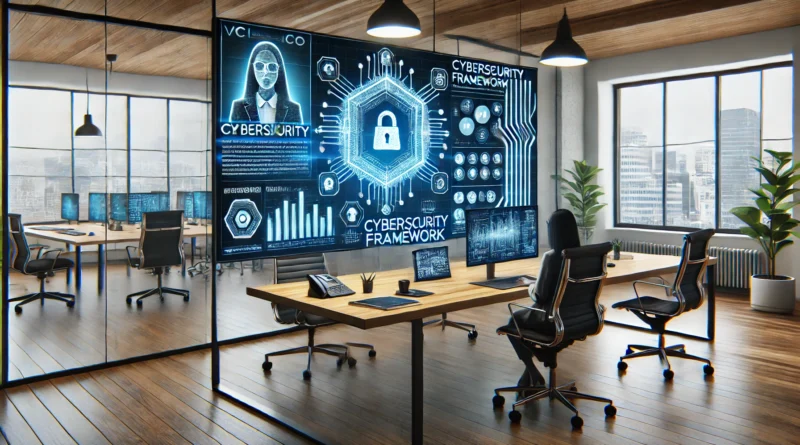Ultimate Guide to vCISO and pTCISO: Everything You Need to Know
Cybersecurity is a critical concern for businesses of all sizes, yet not every organization can afford or justify hiring a full-time Chief Information Security Officer (CISO). This is where vCISO (Virtual Chief Information Security Officer) and pTCISO (Part-Time Chief Information Security Officer) services come into play. These roles provide strategic, cost-effective solutions for managing an organization’s security posture.
In this guide, we’ll explore everything you need to know about vCISO and pTCISO, including their responsibilities, benefits, and how to choose the right option for your business.
What is a vCISO?
A vCISO, or Virtual Chief Information Security Officer, is a professional who offers outsourced cybersecurity expertise. Unlike a full-time CISO, a vCISO works remotely and is typically engaged on a contract or retainer basis. This flexible role allows businesses to access expert guidance without the cost and commitment of a permanent hire.
What is a pTCISO?
A Part-Time Chief Information Security Officer (pTCISO) functions similarly to a vCISO but with a more hands-on approach. pTCISOs may work on-site periodically and integrate deeply into the organization’s operations. This role is ideal for companies that require regular, ongoing support but don’t need a full-time executive.
Key Responsibilities of vCISO and pTCISO
Both vCISO and pTCISO professionals focus on improving an organization’s cybersecurity framework. Their responsibilities include:
- Strategic Security Planning: Developing long-term strategies aligned with business goals.
- Risk Assessment: Identifying vulnerabilities and mitigating risks.
- Policy Development: Creating comprehensive security policies and procedures.
- Compliance Management: Ensuring adherence to regulatory requirements like GDPR, HIPAA, and CCPA.
- Incident Response: Establishing and executing plans to address security breaches.
- Employee Training: Educating staff on cybersecurity best practices.
| Responsibility | vCISO | pTCISO |
| Location | Remote | Partially on-site |
| Engagement Model | Contract/Retainer | Periodic/Regular Hours |
| Focus | Strategic Guidance | Operational & Tactical Support |
Why Organizations Choose vCISO and pTCISO Services
Cost-Effective Solutions
Hiring a full-time CISO can be prohibitively expensive for small and medium-sized businesses (SMBs). vCISO and pTCISO services offer a flexible, affordable alternative without compromising on expertise.
Expertise Across Industries
These professionals often have experience in multiple sectors, providing insights and strategies tailored to diverse industries.
Scalability
As your business grows, a vCISO or pTCISO can scale their services to meet evolving needs, ensuring your security framework adapts accordingly.
Enhanced Security Posture
With focused expertise, vCISOs and pTCISOs help organizations proactively identify risks and strengthen defenses, reducing the likelihood of breaches.
How vCISO and pTCISO Engagements Work
Flexible Models
Organizations can engage a vCISO or pTCISO on an hourly, retainer, or project-based basis, depending on their needs.
Seamless Integration
Both roles integrate seamlessly with in-house teams, working collaboratively to achieve security objectives.
vCISO vs. pTCISO: Choosing the Right Fit
Choosing between a vCISO and pTCISO depends on your organization’s specific requirements:
| Feature | vCISO | pTCISO |
| Engagement Model | Remote | Hybrid/On-Site |
| Best For | Small Businesses, Startups | Midsize Companies |
If your business requires occasional guidance and remote assistance, a vCISO may be ideal. For organizations needing regular, in-depth support, a pTCISO might be the better choice.
Conclusion
Both vCISO and pTCISO roles offer invaluable support to organizations looking to enhance their cybersecurity without hiring a full-time CISO. By providing strategic guidance, mitigating risks, and ensuring compliance, these professionals help businesses stay resilient against cyber threats.
FAQS
1. How does a vCISO or pTCISO handle third-party vendor risks?
vCISOs and pTCISOs conduct thorough assessments of third-party vendors to evaluate their cybersecurity practices. They establish vendor risk management frameworks, review contracts for compliance, and monitor ongoing vendor relationships to mitigate risks stemming from external partnerships.
2. Can a vCISO or pTCISO help during a cybersecurity crisis or breach?
Absolutely. One of the key roles of a vCISO or pTCISO is incident response. They provide immediate assistance during breaches, help contain the threat, and work on recovery plans to restore normal operations while minimizing damage. They also analyze the breach to improve future defenses.
3. What certifications or qualifications should a vCISO or pTCISO have?
Look for professionals with certifications like CISSP (Certified Information Systems Security Professional), CISM (Certified Information Security Manager), or CRISC (Certified in Risk and Information Systems Control). These certifications demonstrate their expertise and ability to manage complex security challenges.
4. How often should an organization review its cybersecurity strategy with a vCISO or pTCISO?
Organizations should review their cybersecurity strategy with a vCISO or pTCISO at least annually. However, in rapidly evolving industries or during major changes like mergers or new technology implementations, more frequent reviews (quarterly or semi-annually) may be necessary.
5. Can a vCISO or pTCISO provide services for startups or small businesses?
Yes, vCISOs and pTCISOs are ideal for startups and small businesses. They offer scalable solutions tailored to limited budgets, ensuring that smaller organizations can access top-tier cybersecurity expertise without the overhead of a full-time hire.
Recommended Articles:
- The Ultimate Guide to Rimbaud82 Jersey NBA 2K
- Who Is Stasha Mikov? A Comprehensive Guide to Her Life and Legacy
- The Ultimate Guide to Rarefied Tech: Explore the Best of Technology at https://rarefiedtech.com
- General News on TheWeeklySpoon.com: Comprehensive Coverage and Unique Features
- Royme Socarras: A Multifaceted Life of Inspiration

